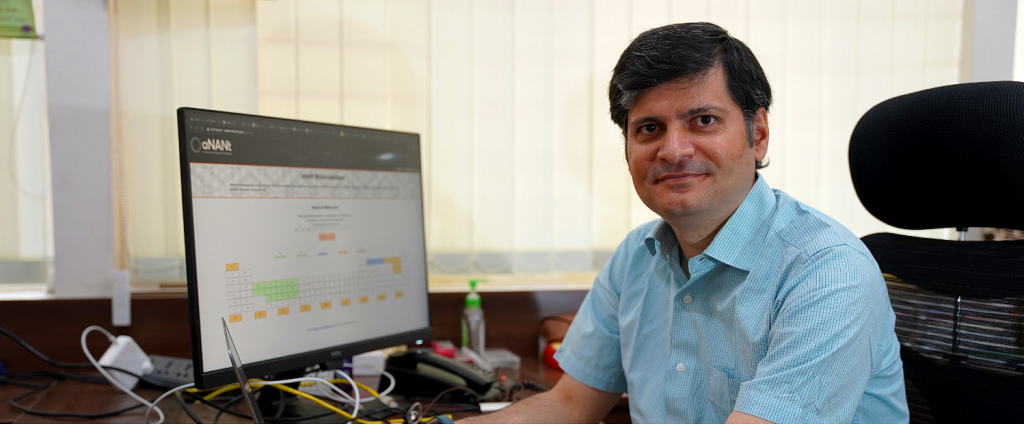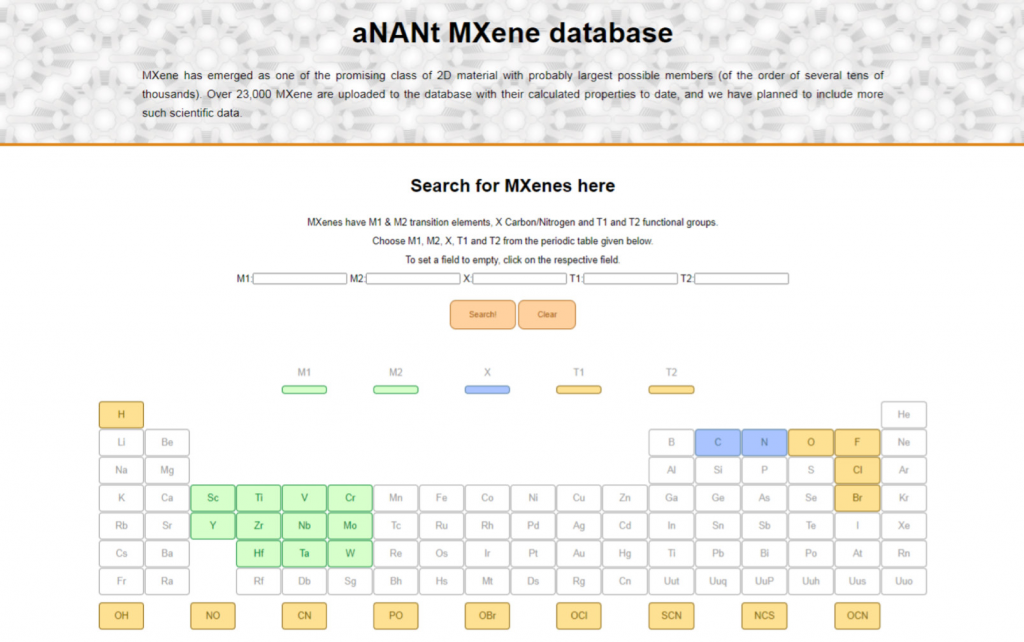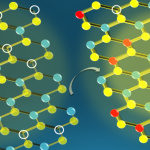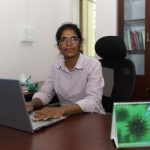Abhishek Singh’s lab studies the properties of materials using theoretical simulations and machine learning

Abhishek Singh, Associate Professor at the Materials Research Centre (MRC) in IISc, is in a hurry to make a difference. “I just didn’t want to do research in an area where applications may come after 20-30 years. I wanted to work in an area in which [my research] can be utilised right away,” says Singh, explaining why he chose to become a materials scientist.
Singh’s journey as a researcher in this field began during his PhD at Tohoku University in Japan, which he did after a Master’s at the Indian Institute of Technology, Delhi. For his PhD, he studied silicon-based nanostructures. He then had two postdoctoral stints in the US – first at the University of California (UC), Santa Barbara, where he studied semiconductor devices, and the second at Rice University, which involved optimising graphene nanomaterials for hydrogen storage.
Singh joined IISc as Assistant Professor in 2010. At MRC, he heads a lab called the Materials Theory and Simulation Group, where he and his students use computational methods to identify materials that can be used in research and in devices to improve the quality of our lives. He says, “Most of the time, I try to solve problems of relevance. I also like to challenge myself.”
One of the first challenges that Singh took on when he started his lab was to study thermoelectric materials, which convert heat energy into electricity, and are used in engines and for refrigeration. According to him, in spite of their enormous potential, these materials have not been well-studied, at least in India. Singh has been on a quest to find suitable thermoelectric materials to replace traditional materials, such as lead based materials and silicon-germanium alloys, which have limited efficiency. For instance, the use of a thermoelectric material in a car engine could harvest up to two-thirds of the energy that is wasted as heat.
Another active area of research in Singh’s lab is using computational methods to identify the properties of two-dimensional (2D) materials and finding ways of enhancing their useful properties. 2D materials have wide-ranging applications in nanoelectronics, optics, and flexible devices. Because Singh’s lab is involved largely in theoretical research on such materials, they collaborate extensively with experimental labs around the world to validate their findings.
For instance, in a significant theoretical breakthrough, Singh’s group found that the semiconductor molybdenum disulphide (MoS2) transitions into a metal when pressure is applied to it. Their results were independently validated by an experimental lab at the University of Texas at Austin in the US. This was followed by a fruitful collaboration between the two labs that explained the observed phenomenon. This joint effort could lead to the development of improved pressure switches and sensors.
MXenes, another class of 2D materials, has several applications in ion batteries, gas storage, sensors, and catalysis. MXenes are composed of several layers that are bonded through chemical interactions. One can control the process of separating the individual layers and in the process generate a huge array of MXene-derived structures. The individual structures differ in their functional groups and/or metals and therefore possess different material properties, thus broadening the scope of the utility of these materials.
In addition to fine-tuning interesting properties of individual materials, Singh’s group has built the world’s largest 2D materials open-access database on MXenes called aNANt. Released in 2018, it describes the material properties of up to 23,000 MXenes. Singh and his team began the process of creating the database from scratch four to five years ago. They have used aNANt to develop several powerful machine learning (ML) models, which could predict the properties of a material within a few seconds, giving a fair assessment of the suitability of a material for a target application.

(Image courtesy: Materials Theory and Simulation Group)
ML allows the team to visualise unknown patterns in material properties and to make connections among seemingly disparate behavioural parameters, a process that would have taken them decades had they used more traditional approaches. The use of ML has also led to a recent publication that describes the relationship between thermal and electronic properties, previously unknown to materials science. The results of the study, which Singh describes as “one of his favourites”, are useful in thermoelectrics, where both these properties would have to be simultaneously optimised.
In line with his long-term motivation of extracting real-life applications from his research, Singh’s lab has also contributed to research on superalloys, which are used in aerospace, marine, chemical, and petrochemical industries because they have a set of unique properties: superior mechanical strength, creep resistance (resistance to deformation) at high temperatures, surface stability, and corrosion resistance. The group has also created a tool, again using ML, to predict the hardness of superalloys using only a few images of the material taken on a scanning electron microscope (SEM) and its composition. The lab is now working towards extending the use of this tool to predict other properties of materials.
Singh expects that in the coming years, his lab will focus on the design of new materials based on properties predicted using machine learning. “We would like to tell them [experimentalists] the parameters they should use in their experimental setup to get a material with desired properties,” he elaborates. One drawback of making computational predictions about material properties is that the material does not always perform as expected when it is integrated into a device. Therefore, Singh wants to simulate the process of designing materials as well. This, he says, will help standardise parameters for manufacturing the material, such that it does not lose its superior properties.
Singh believes that his curiosity about the world is key to his scientific success. He says that he always tells young students that they should take up research only if their goal is to learn. “I entered research because this is the only profession which pays me to learn.”







